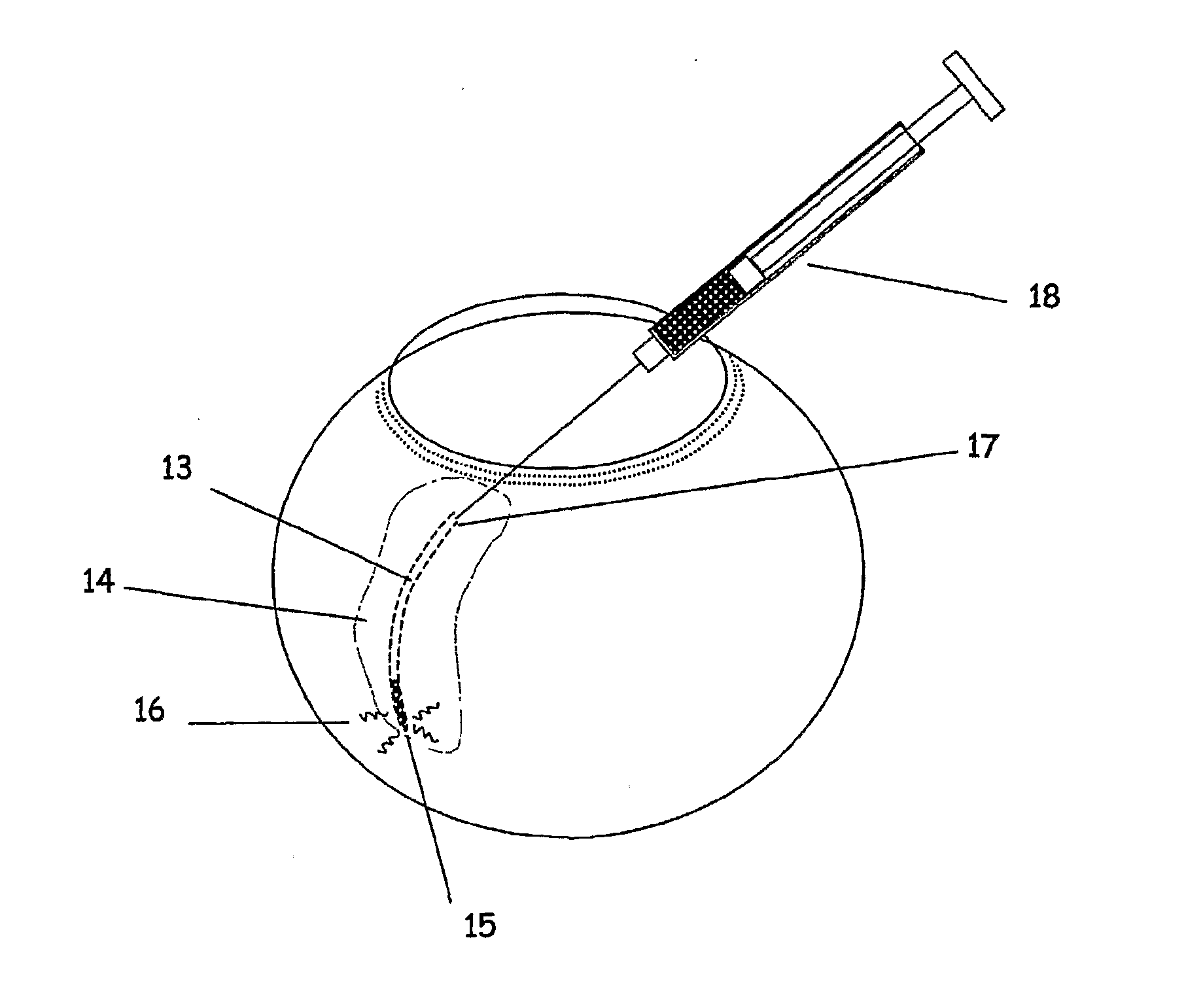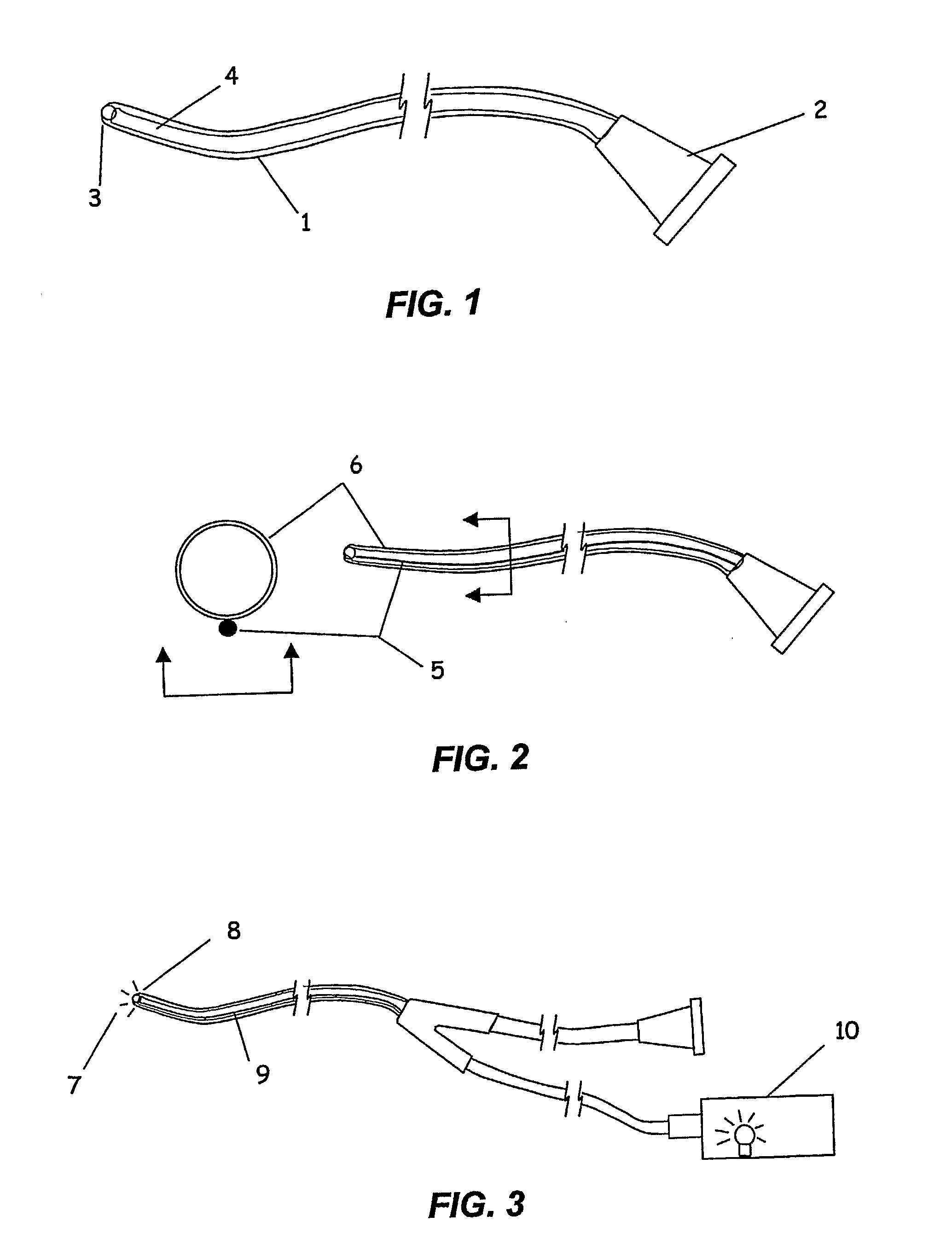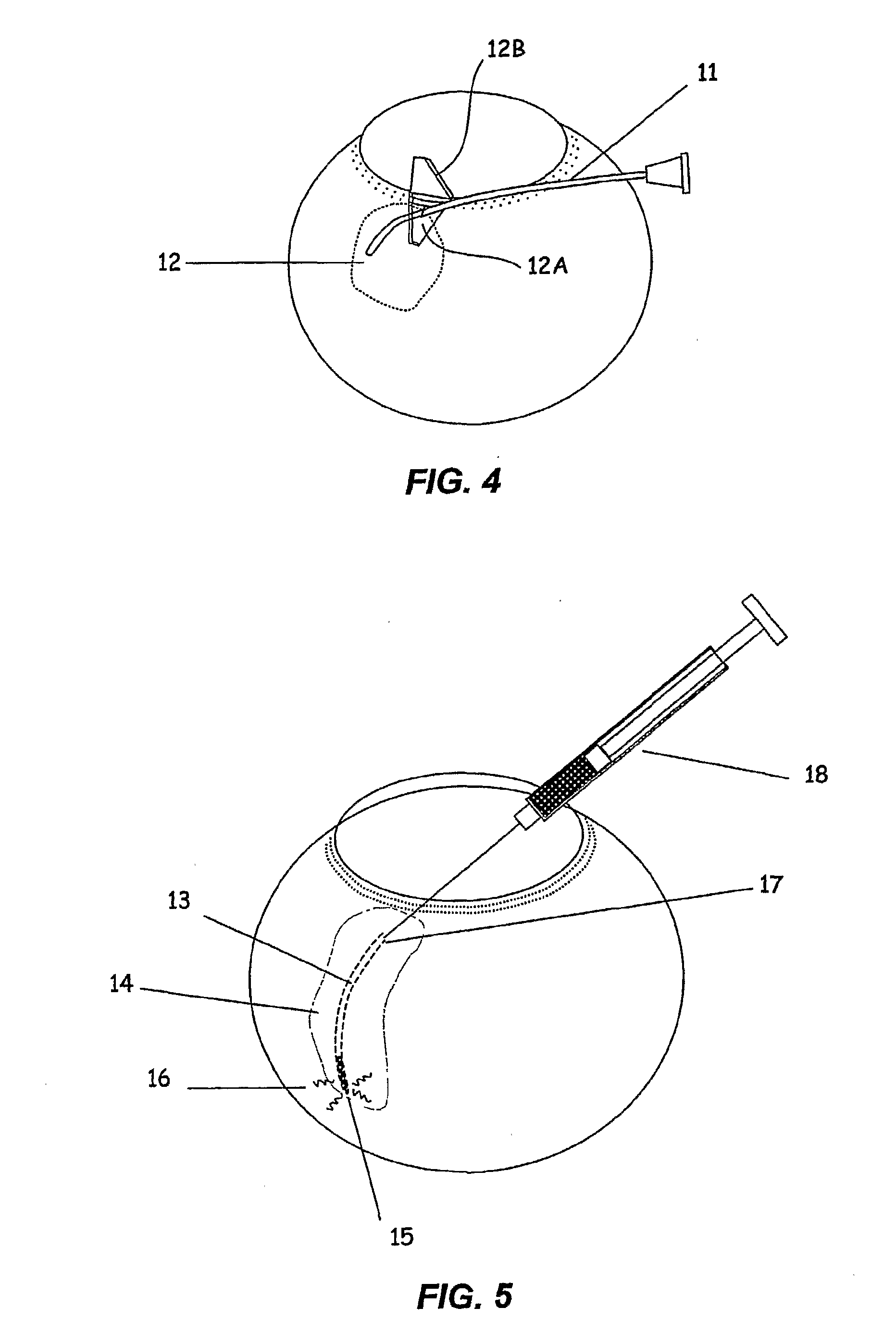Apparatus and Method for Ocular Treatment
a technology of ocular treatment and appendix, which is applied in the field of appendix and ocular treatment, can solve the problems of difficult subsequent surgery, small size and delicate nature of the tissue, and impede the access to the eye for medical treatment,
- Summary
- Abstract
- Description
- Claims
- Application Information
AI Technical Summary
Benefits of technology
Problems solved by technology
Method used
Image
Examples
example 1
[0057] A microcannula comprising a polyimide infusion lumen, a stainless steel anti-kink core wire and a plastic optical fiber to create a beacon signal at the device tip was fabricated. The components were bound together using very thin walled heat shrink tubing of polyethylene terephthalate (PET). The assembled microcannula was approximately 200 microns in outer diameter, 75 microns inner diameter and with a working length of 25 mm. An atraumatic ball-shaped distal tip was produced by heating the end of the PET shrink tubing to it's melt point prior to assembly. The surface tension of the melt results in the creation of a rounded ball-shaped tip. A stainless steel wire was placed in the lumen to maintain the lumen during the melting of the tip. The proximal end consisted of an infusion tube connected to a luer fitting, and a fiber optic light pipe connected to a 25 mW laser diode illumination source. The luer fitting was attached to an injector filled with a surgical viscoelastic ...
example 2
[0059] A drug formulation was prepared for suprachoroidal administration by injection through a microcannula of the present invention. Three milliliters of sterile triamcinolone acetonide suspension (Kenalog 40, 40 mg / ml, Bristol Meyers Squib) was withdrawn into a sterile syringe. The syringe was attached to a sterile 0.45 micron syringe filter and the drug suspension was injected into the filter, capturing the drug particles. A second syringe with an adjunct mixer was attached to the filter and 0.6 milliliters of sterile hyaluronic acid solution (Healon, 10 mg / ml, Advanced Medical Optics, Irvine, Calif.) introduced into the filter containing the drug particles. The hyaluronic acid and drug particles were then withdrawn into the first syringe and the filter removed. The hyaluronic acid and drug particles were mixed by multiple passage between two sterile syringes. The suspended drug formulation contained 200 mg / ml triamcinolone acetonide and 10 mg / ml hyaluronic acid. The drug formul...
example 3
[0060] Microcannulae were fabricated, comprising a communicating element of 65 Shore D durometer Pebax tubing of 0.008″×0.0010″ diameter, containing a plastic optical fiber 0.0033″ diameter and a stainless steel wire 0.001″ diameter within the lumen. The plastic optical fiber was connected to a laser diode light source similar to that used in Example 1 to provide for an illuminated beacon distal tip. The steel wire was incorporated to prevent kinking of the shaft. The lumen of the tube was attached to a larger plastic tube and then to a proximal Luer connector for the attachment of a syringe or viscoelastic injector. An atraumatic distal tip was created by applying a small amount of high viscosity ultraviolet cure adhesive and allowing the surface tension to create a ball-shaped tip prior to curing. The devices were sterilized for use by gamma irradiation.
[0061] Animal studies were performed to evaluate the microcannula in accessing the suprachoroidal space and advancing to the pos...
PUM
 Login to View More
Login to View More Abstract
Description
Claims
Application Information
 Login to View More
Login to View More - R&D
- Intellectual Property
- Life Sciences
- Materials
- Tech Scout
- Unparalleled Data Quality
- Higher Quality Content
- 60% Fewer Hallucinations
Browse by: Latest US Patents, China's latest patents, Technical Efficacy Thesaurus, Application Domain, Technology Topic, Popular Technical Reports.
© 2025 PatSnap. All rights reserved.Legal|Privacy policy|Modern Slavery Act Transparency Statement|Sitemap|About US| Contact US: help@patsnap.com



